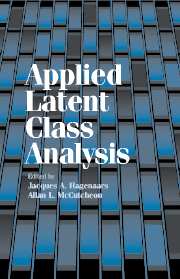Preface
Published online by Cambridge University Press: 31 July 2009
Summary
In two very important overviews of latent class modeling, Clifford Clogg discussed the advances made in the area of latent class analysis during the past two decades (Clogg, 1981, 1995). From a formal, statistical point of view, great progress has been made regarding the estimation and testing of latent class models. It also has become clear that particular developments in econometrics, biometrics, and mathematical statistics concerning (finite) mixture models, unobserved heterogeneity, frailty models, and random coefficient models are identical or at least have very close ties to latent class modeling, thus enhancing our insight into the potentialities of latent class analysis. Furthermore, in the social and behavioral sciences, close relationships between latent class and loglinear models and between latent class and latent trait (item response) models have been discovered, leading latent class analysis to be viewed as a very general latent variable model for categorical data. Finally, and perhaps most importantly, it has been shown that latent class analysis provides a very useful tool for answering many substantive questions in the social and behavioral sciences.
Nevertheless, and despite the present availability of user-friendly software with which latent class models can be easily and routinely applied, practicing social and behavioral researchers do not always consider latent class analysis a serious alternative for better-known techniques, such as factor analysis or linear structural equation modeling, even where it would be a more appropriate means to address their questions.
- Type
- Chapter
- Information
- Applied Latent Class Analysis , pp. xi - xxiiPublisher: Cambridge University PressPrint publication year: 2002
- 3
- Cited by



